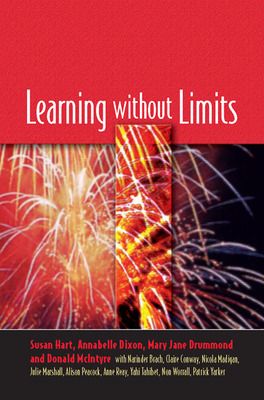Learning without Limits
Receive via shipping:
- Colour, print bound version of the complete text
Acknowledgements
Part one: Beyond ability-based teaching and learning
Chapter 1: Ability, educability and the current improvement agenda
Chapter 2: What's wrong with ability labelling?
Chapter 3: The Learning Without Limits project: methods and approaches.
Part two: Accounts of the teachers' practices
Introduction
Chapter 4: Anne's approach: 'They all have their different ways to go'.
Chapter 5: Claire's approach: 'a thinking classroom'.
Chapter 6: Alison's approach: 'an open invitation.'
Chapter 7: Narinder's approach: 'the promise of tomorrow.'
Chapter 8: Patrick's approach: 'only connect.'
Chapter 9: Nicky's approach: 'Step back and look at the children.'
Chapter 10: Yahi's approach: 'raising the level of trust.'
Chapter 11: Julie's approach: 'access, security, success.'
Chapter 12: Non's approach: 'the bridge between values and practice.'
Part three: the core idea of transformability.
Chapter 13: Transforming the capacity to learn.
Chapter 14: Purposes and principles in practice.
Chapter 15: Young people's perspectives on learning without limits.
Chapter 16: Framing learning without limits teaching: contexts and retrospectives.
Chapter 17: Towards an alternative improvement agenda.
Bibliography.
- Why do some teachers insist on teaching without recourse to judgements about ability?
- What are the key principles on which they draw as they organize and provide for learning?
- What is the significance of their alternative approach for classrooms in the 21st century?
The authors analyze these case studies and identify the key concept of transformability as a distinguishing feature of these teachers' approach. They construct a model of pedagogy based on transformability: the mind-set that children's futures as learners are not pre-determined, and that teachers can help to strengthen and ultimately transform young people's capacity to learn through the choices they make. The book shows how transformability-based teaching can play a central role in constructing an alternative improvement agenda.
This book will inspire teachers, student teachers, lecturers and policy makers, as well as everyone who has a stake in how contemporary education and practice affect children's future lives and life chances.

